When man resolved to imitate walking,
he invented the wheel, which does not look like a leg.
Apollinaire
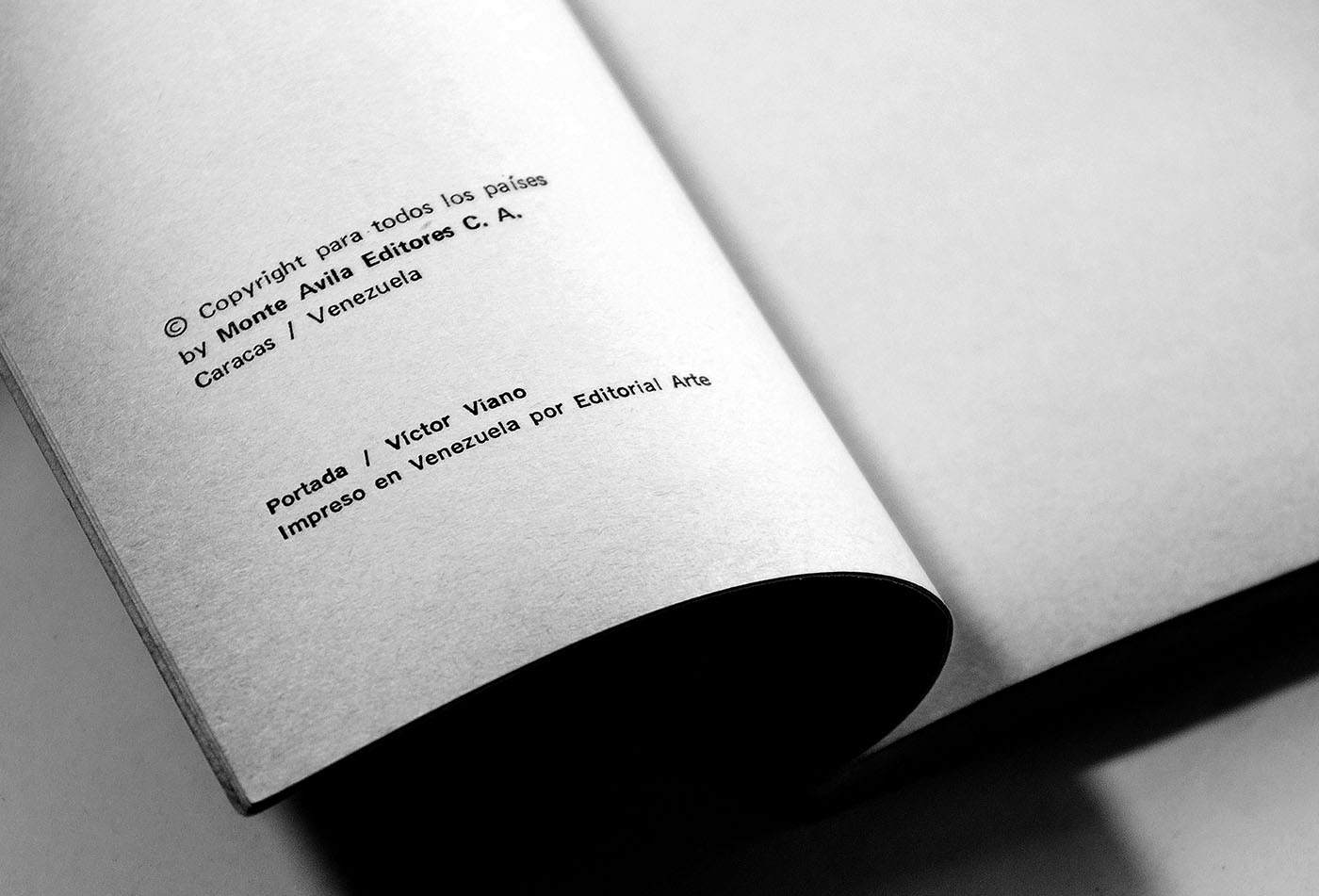
A couple of years ago, I had the honor of presenting a lecture at Columbia University regarding my research on Venezuelan editorial design and a draft of research on its book history. It is no coincidence that I live in New York now since Venezuela’s editorial design began here, where Francisco de Miranda, one of Venezuela’s founding figures, managed to get a press assembled and took it to Venezuela in the early 1800s.
Growing up in Venezuela, as a reader, was to grow up surrounded by printed material from national publishing houses. Back in the day, our production used to be massive. Monte Ávila Editores1 was one of our top presses. Besides having an amazing catalog that included new authors, translations, and classics, they had the most amazing covers. Ironically, being Venezuela, a country with such an extensive and renowned history in books, multiple awards in Leipzig and other countries, plus a Gutenberg Prize, it is a shame to have to rely so much upon oral tradition to find accurate accounts of our own book history. It is especially true now, with the current totalitarian regime and all media being politicized and electric power and internet shortages.
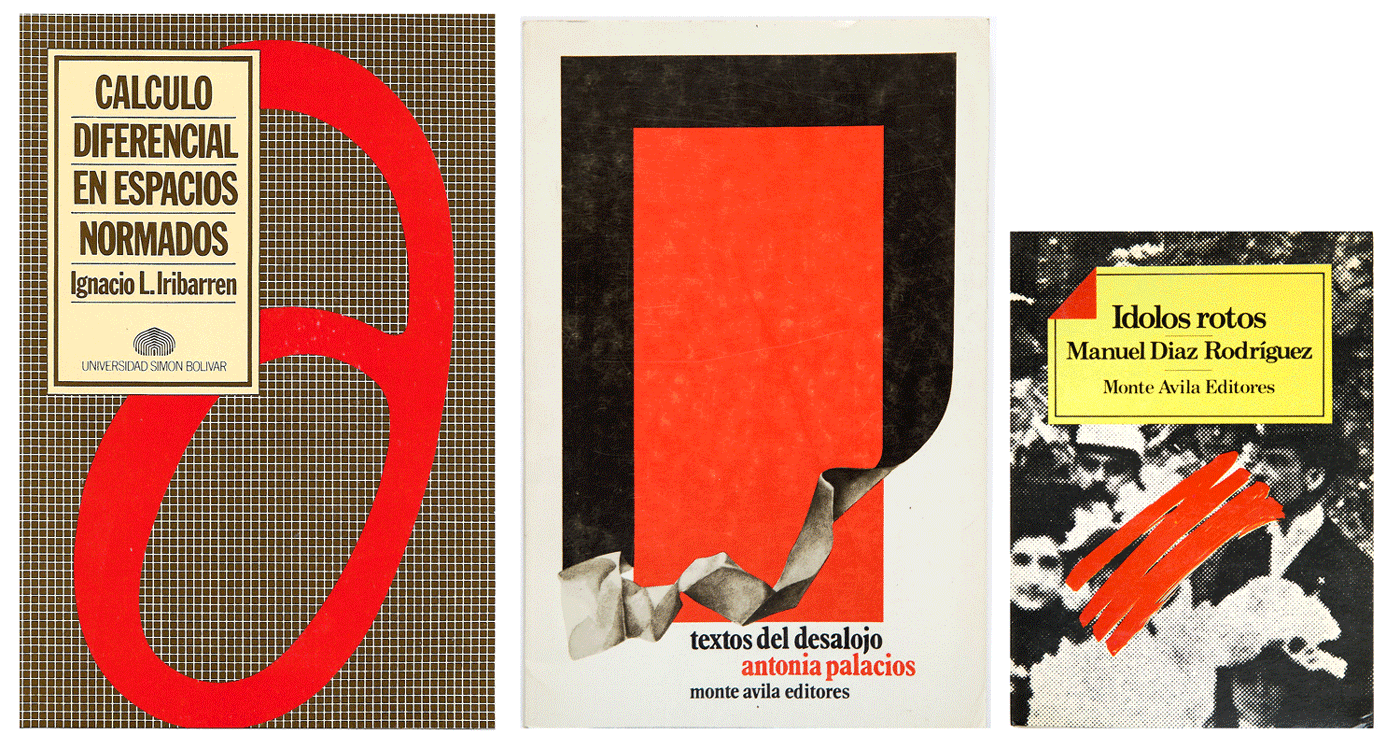
However, the main question behind this research started as something many readers and book designers have asked: who designed the cover of this book I am reading? Being a bibliophile, I am certain that almost every credit page I read said the same thing: Víctor Viano had designed the cover. But who was Víctor Viano?
Since most of the references about the designer cannot be found anywhere else besides loose document sheets, unorganized family archives, and personal testimonials, writing about Víctor Viano is a hard, yet not an impossible task. Last year, I was lucky enough to travel to Spain and meet with Luisa, an amazing architect, and Víctor Viano’s widow. Luisa was very kind and answered all my questions regarding their life together and his career.
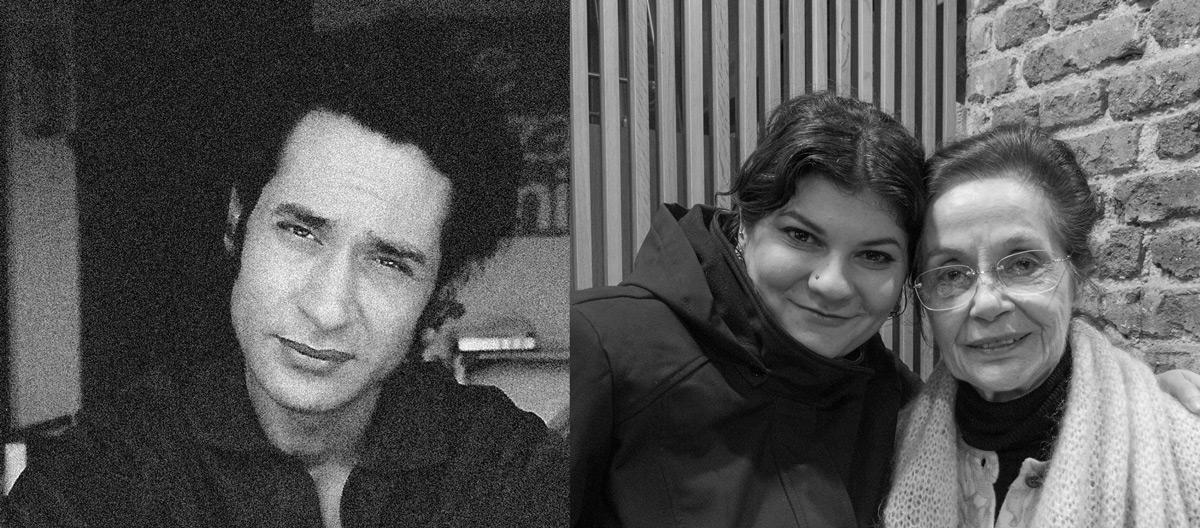
Victor in Argentina / When I met Luisa in Madrid
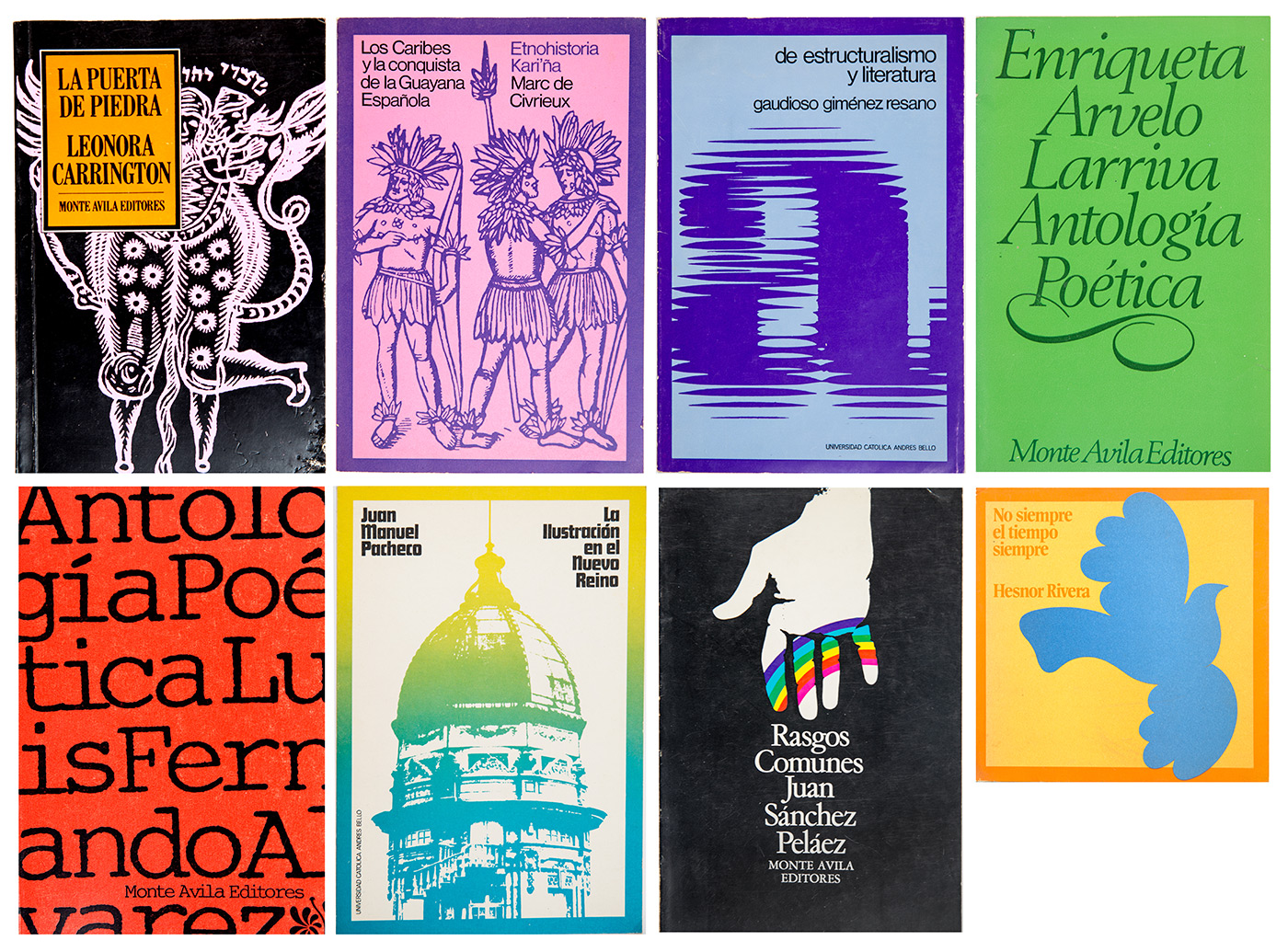
Some of Victor Viano’s covers printed at Editorial Arte
Víctor Viano Bonaldi was born in 1939 in Rio Primero, Córdoba, Argentina. He formally studied illustration and art and won various awards that encouraged him to branch out with his craftsmanship into different fields, such as radio and television. Viano also won a scholarship that allowed him to travel to the British Council Foreign Office for the BBC in 1965. His arrival later in Venezuela was the result of him winning a contest in his hometown in Argentina for the position of Art Director in Ricardo de Luca Advertisement, a renowned agency that was founded in 1935. By this point, this agency created all of the marketing pieces for Gillette2 in Venezuela. After winning the contest and moving to Venezuela with his family, he dedicated himself almost entirely to editorial design, and thus, he ended up filling the position for only a year.
In 1968, Víctor arrived in Venezuela at a time when the main focus of publishing was in the hands of State institutions, as stated by historian Pedro Grases in Bibliographical Research3. This was a time between two of the most important oil booms4. Venezuela was one of the first oil producing/exporting countries in the world5, and when oil prices rose, the budget for books and culture, (and everything else,) went through the roof.
Some of the publishing houses Viano worked for, besides Monte Ávila, were: Tiempo Nuevo, Letras Nuevas, The Magazine of National Culture, Editorial Arte, Simón Bolívar University, Zulia’s Culture Institute, and Venezuela’s national government. He also designed for newspapers. For example, he designed the header for El Diario de Caracas6 in 1979. There are not many bibliographical references about this, and in the few that exist, some of his work is attributed to someone else7.
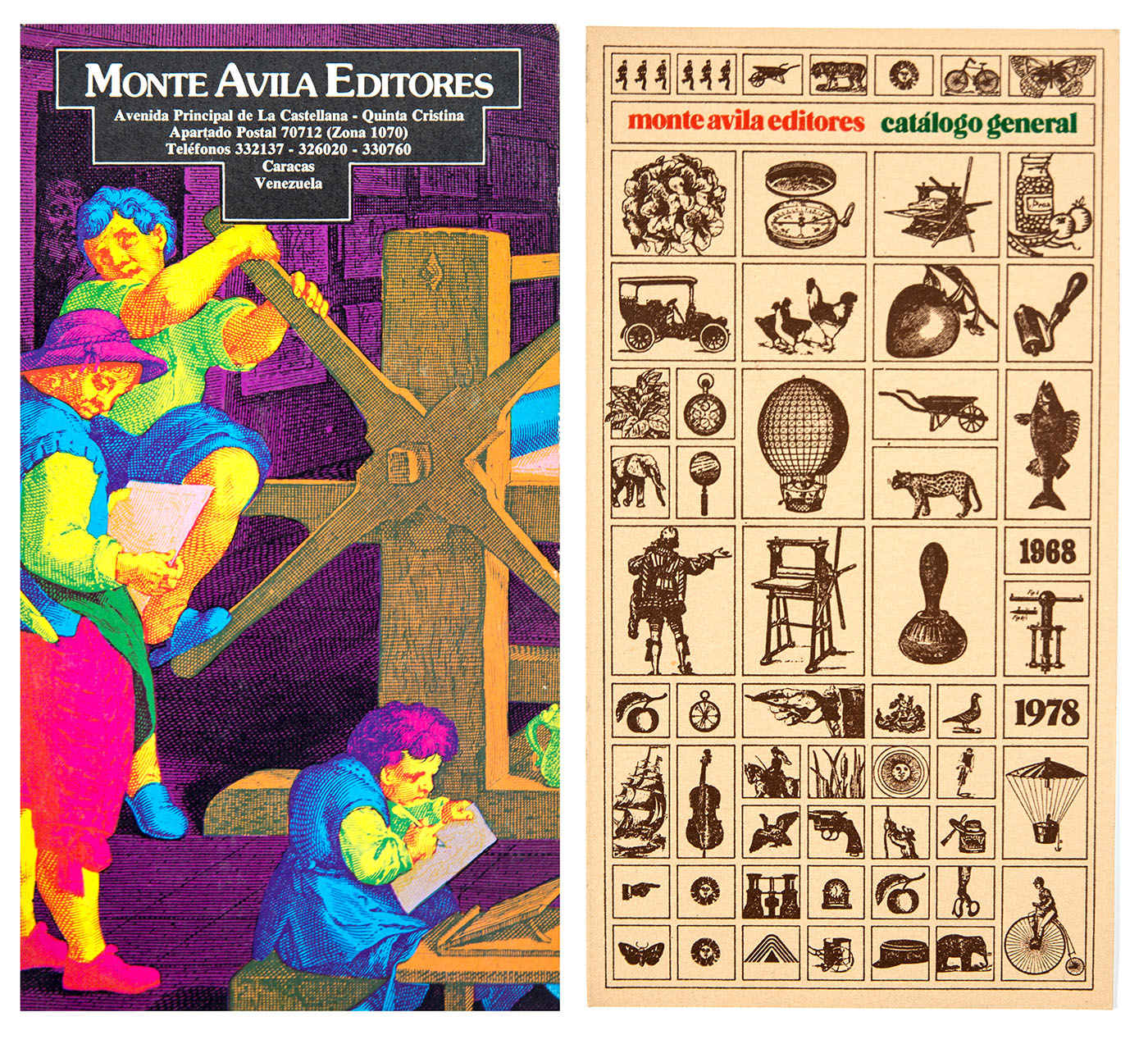
Víctor worked with writer Juan Liscano8 on many of these projects. Coincidentally, they would find each other later, once Víctor migrated again, this time to Europe, where he designed both the branding and the entire collection for the publishing house, Ediciones Mandorla. This particular one was an independent, Spanish publishing house that made first editions of bellwether books such as Love and Terror of Words by J.M. Briceño Guerrero and The Kingdom Where Night Breaks Open by Hanni Ossott.
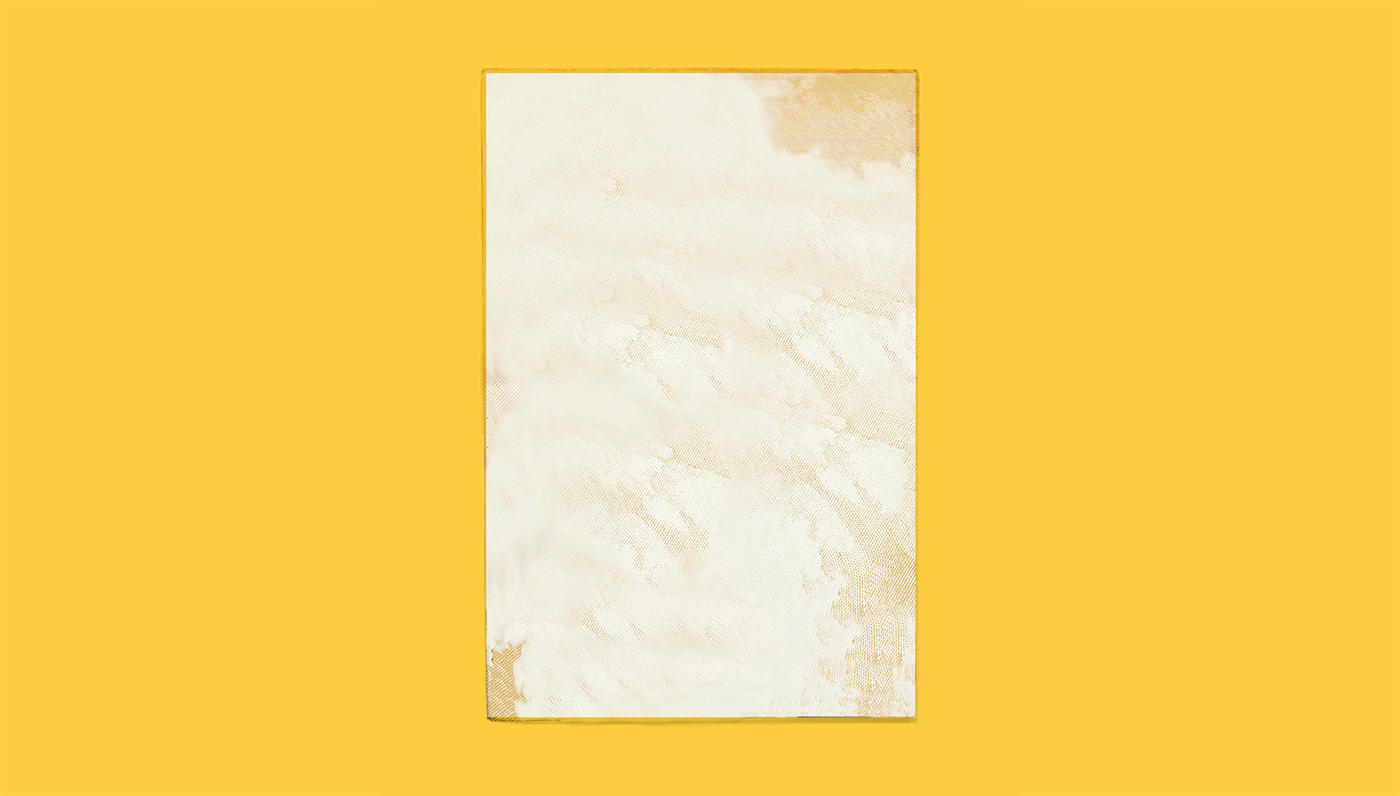
At a time when everything was produced with blueprints, cut by hand, and in layers-superposed in transparency, Viano chose to make a statement with bold covers and visual metaphors. This is why many of these covers included ornamented borders and capitals, or really large titles on the dust jacket. It amazes me how current these covers and graphics still are. He was definitely influenced by marketing being introduced in the publishing (literature) world9. These references, as I noted earlier, were very familiar to him because of his previous work experience. This experience with branding and editorial design lead him to create the branding and covers for Paidós10, one of Latin America’s publishing powerhouses, who still uses the logo he designed.
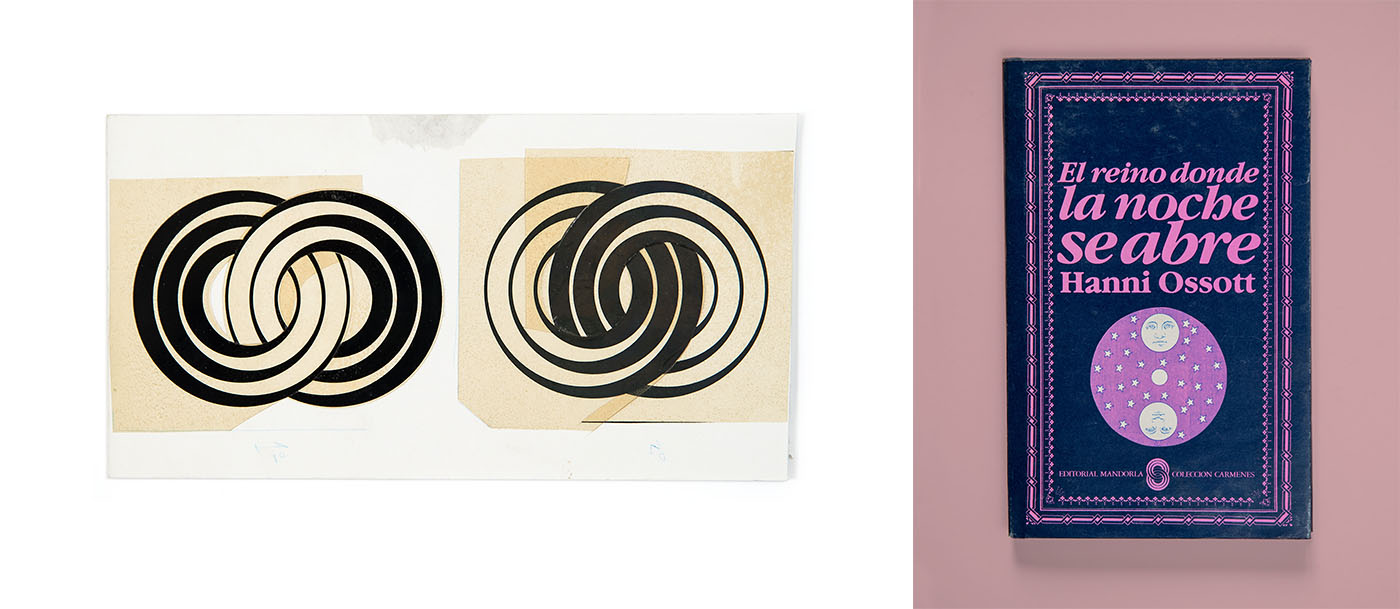
Drafts for the Mandorla logo and one of the covers
Viano died in the year 2000 in Spain. I will always regret not having met him. I now work as a book designer and get to start over and read all of the credits from books here as if they were new. In the same way Víctor arrived in Venezuela, running away from Argentina’s political coup and collapse12, I now am able to reconstruct a story of Venezuela’s book history, and try to make more sense of it from the outside. I am grateful for such a legacy.
❧
If you are interested in Viano’s work, you can consult a copy of one of his books at the Letterform Archive. I am currently working on an exhibit with facsimiles and actual copies of his publications to show his work on book design. It will take place next year at the Type Directors Club. There was also an article published in the latest version of Luster Magazine. If you have any questions, feel free to email me at: info@faridemereb.com
-
Monte Ávila Publishing House was founded in 1968 and directed in the beginning by Simón Alberto Consalvi, journalist, diplomat, and minister of foreign affairs on various occasions.
-
Ricardo de Luca (1910-1994). Father of Argentinian Winner of the Konex award in 1987.
-
“Venezuela currently publishes a massive number of books that are enabled by official action of the State. Publishing activity by private presses is very narrow, almost to the point that it doesn’t hold any importance in contemporary bibliography (…) Given the character of Venezuela’s editorial manner, it is inofficial institutions is where you can find the center of all book publishing. All ministries are, in fact, editors. Not only in publications regarding their field of administration, but on books about very broad subjects.” Pedro Grases. Bibliographical Research Vol. 2, 1968. It is important to notice that by the time this was written, Monte Ávila Editores was not even founded.
-
Oil Boom corresponding transition of President Raúl Leoni and President Rafael Caldera on his first term. https://www.nytimes.com/1972/07/06/archives/dr-raul-ueoni-67-president-of-venezuela-196469-dead-leader-of.html
-
“The abrupt increment of oil prices between 1973-1974, was not due to a worldwide lacking on the matter. It was actually a result of a long historic process that countries members of the Organization of Oil Exporting Countries (OPEP), in quality of landowners, developed media to extract rent on the base of their property over the oil deposits, an absolute rent, besides the rents they were charging before.” Coronil Ímber. El Estado Mágico. 2013.
-
Diario de Caracas, https://catalog.loc.gov/vwebv/search?searchCode=LCCN&searchArg=sn%2094049768&searchType=1&permalink=y
-
DGV, 70, 80, 90. 1996. Where it says he worked with Juan Fresán/Alfredo Armas Alfonzo. Diseño gráfico en Venezuela. 1985.
-
Juan Liscano https://en.wikipedia.org/wiki/Juan_Liscano
-
Books begin to pursue their branding by incorporating the logo of the Company and leaving behind the unified image for collections, a more commercialapproach was to create a unique cover for each title that combined illustration, lettering, different type treatments and a lot of graphic resources and finishing. A graphic system for book covers. Rosa Llop. 2014.
-
Paidós, Argentinian publishing house.
-
Coup (Argentine Revolution) in 1966 to take Arturo Umberto Illia out of the presidency and General Juan Carlos Onganía took his place as a military dictator.
